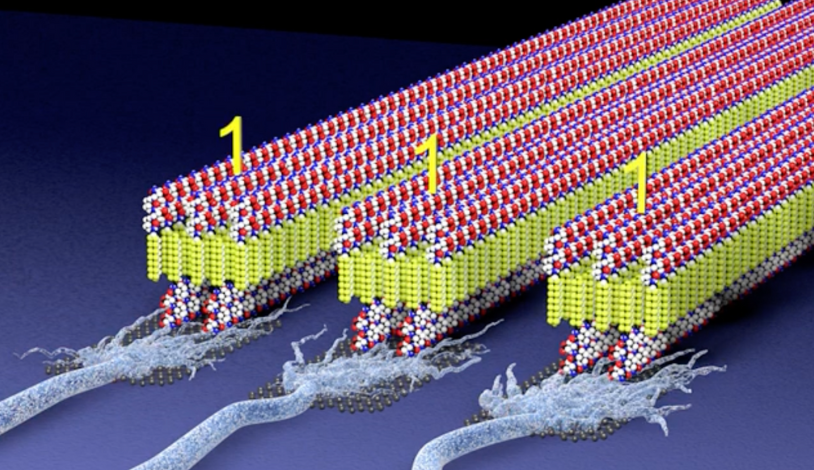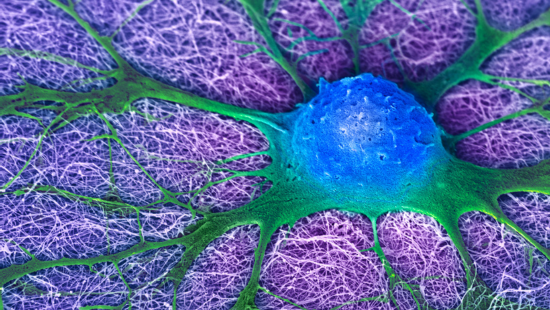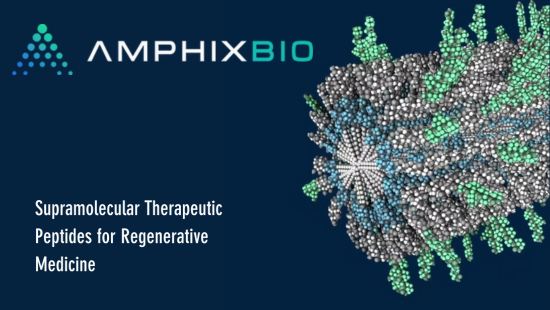
NU Chemistry Impact

Stupp Group Research
The Stupp Laboratory develops regenerative therapies to reverse paralysis from spinal cord injury, repair damaged cartilage, and facilitate spinal fusion without side effect-causing growth factors.
The Stupp Laboratory investigates self-assembling and highly functional new materials and nanostructures designed using supramolecular chemistry. The functional targets include materials with transformative potential in the areas of advanced medicine, energy challenges, and sustainability on the planet. Currently, a strong focus of the group is regenerative medicine research involving molecular engineering of materials to optimize their bioactivity. This strategy incorporates basic science breakthroughs in structural supramolecular chemistry and most importantly the emerging field of supramolecular dynamics within those materials. The result is a highly innovative platform of supramolecular therapeutic peptides (STPs) in which peptides activate cell receptors with higher potency than standard drugs while also forming physical nanofiber scaffolds that support tissue regeneration. An exciting aspect of this platform is how tunable it is to a broad range of biological targets, through incorporating different bioactive signals into the materials. For example, the Stupp laboratory has developed specific signals for axonal regeneration in neurons to treat spinal cord injury and neurodegenerative diseases, another that facilitates or blocks blood vessel formation, and others that induce the regeneration of cartilage, bone, and muscle.
The overarching goal of STP therapies is to significantly improve patients’ lives by initiating regenerative processes and restoring function lost from injury, disease, or aging. First-in-human trials for STPs are expected to begin in the second half of 2026 for both acute spinal cord injury and spinal fusion procedures to treat back pain caused by degenerative disc disease. Cartilage-regenerating materials to treat traumatic injuries or osteoarthritis could also enter clinical trials in the next few years, and the Stupp group is exploring the use of STPs to treat stroke and neurodegenerative conditions such as Alzheimer’s disease, Parkinson’s disease, and amyotrophic lateral sclerosis (ALS). In short, the STPs pioneered in Stupp’s laboratory could produce transformative new therapies for many devastating and difficult-to-treat conditions, benefitting millions of people worldwide.
Real World Applications
Amphix Bio, launched from research in the Stupp Lab, develops regenerative medicine therapies using supramolecular chemistry.
The Science Behind the Application


‘Dancing molecules’ successfully repair severe spinal cord injuries
Regenerative Medicine in Action
‘Dancing molecules’ could hold the key to repairing severe spinal cord injuries — see how.


